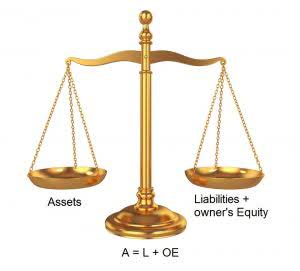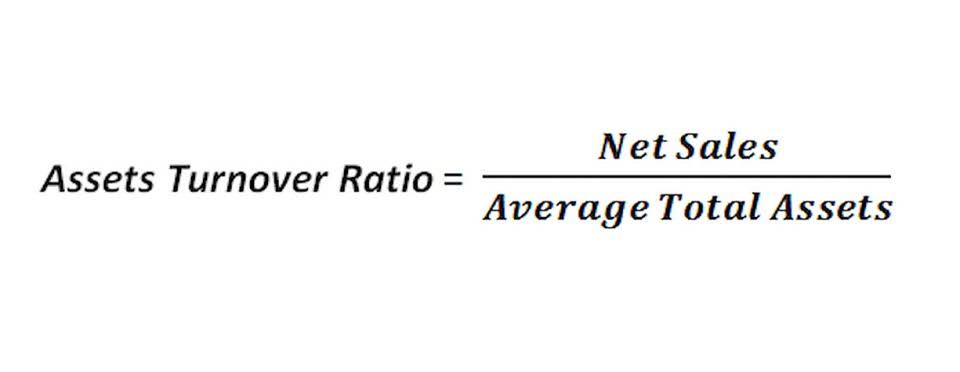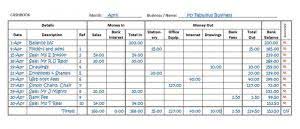
This broader measure can reveal underlying issues or strengths that are not immediately apparent from net income alone, making it an invaluable tool for investors and analysts. Items included in comprehensive income, but not net income, are reported under the accumulated other comprehensive income section of shareholder’s equity. Add a heading to the report that identifies statement of comprehensive income it as an income statement to complete your income statement. Fill in your company’s information as well as the income statement’s reporting period. You’ve now constructed an accurate income statement using all of the information you’ve gathered. This will offer you a better grasp of income statement definition in the future, which will help you and your organization.
IASB proposes illustrative examples on climate-related and other uncertainties in the financial statements
The net result of the four financing activities caused cash and cash equivalents to increase by $28,000. Although the income statement is a go-to document for assessing the financial health of a company, it falls short in a few aspects. The income statement encompasses both the current revenues resulting from sales and the accounts receivables, which the firm is yet to be paid. The SCI, as well as the income statement, are financial reports that investors are interested in evaluating before they decide to invest in a company. The statements show the earnings per share or the net profit and how it’s distributed across the outstanding shares.

Is Other Comprehensive Income Part of Retained Earnings?
- Hence, they have to bypass the company’s net income statement—the sum of recognized revenues minus the sum of recognized expenses—which does include changes in owner equity.
- The SCF is necessary because the income statement is prepared using the accrual method of accounting (as opposed to the cash method).
- Even though the income statement is a standard tool for measuring a company’s financial health, it falls short in key areas.
- You can gain additional insights regarding the cash flows from operating activities from our Explanation of the Cash Flow Statement.
- However, since it is not from the ongoing operations of the company’s normal line of business, it is not appropriate to include it in the traditional income statements.
- The higher the earnings for each share, the more profitable it is to invest in that business.
International Financial Reporting Standards (IFRS) and Generally Accepted Accounting Principles (GAAP) both mandate the reporting of comprehensive income, but they approach it with slight differences that reflect their unique frameworks. Explore the key components and financial impact of comprehensive income, and understand its distinction from net income in financial reporting. It provides a comprehensive view for company management and investors of a company’s profitability picture. Like other publicly-traded companies, Ford Motor Company files quarterly and annual reports with the SEC. In its first quarter filing for 2023, it published its consolidated statements of comprehensive income, which combines comprehensive income from all of its activities and subsidiaries (featured below).
Viewpoint allows you to save up to 25 favorites.
However, if a company’s assets or liabilities contain a significant unrecognized gain or loss, it might have a significant impact on the company’s future sustainability. Similarly, it highlights both the present and accrued expenses – expenses that the company is yet to pay. But if there’s a large unrealized gain or loss embedded in the assets or liabilities of a company, it could affect the future viability of the company drastically.


Statement no. 130 does not require companies to disclose comprehensive income in a specific place in the interim financial statements, nor does it require that they report the separate components of other comprehensive income. A business reports comprehensive income to reflect all changes in its equity that result from recognized transactions and other economic events of the period-other than transactions with owners in their capacity as owners. Historically, companies displayed some of these changes in a statement that reported the results of operations, while other changes were included directly in balances within a separate https://www.bookstime.com/ component of equity in a statement of financial position. Instead investors and creditors must look on the statement of stockholder’s equity, a combined statement of comprehensive income, or a second separate income statement if they want to see the affects of unrealized gains and losses on equity. These reports list all of the unrealized gains and losses that took place during the year and show how they contribute to the overall equity balance of the company. A company must determine reclassification adjustments for each classification of other comprehensive income, except for minimum pension liability adjustments.
- The statement of comprehensive income displays both net income details and other comprehensive income details.
- Administrative documents that indicate the end balances of each account in the general ledger for a certain reporting period are known as trial balance reports.
- One thing to note is that these items rarely occur in small and medium-sized businesses.
- By encompassing these additional elements, comprehensive income offers a more complete picture of a company’s financial health, capturing potential risks and opportunities that net income might overlook.
- Because other comprehensive income is presented after tax, a note is needed for the income before tax, the tax expense/benefit and the aftertax amounts of each component of other comprehensive income.
- The statement of comprehensive income is not required if a company does not meet the criteria to classify income as comprehensive income.
- ” For instance, if inventory increases, the amount of the increase will be shown as a negative amount on the SCF since it assumed to have used the corporation’s cash.
Objective of financial statements
Experienced financial people will review the net cash provided from operating activities. ” For instance, if inventory increases, the amount of the increase will be shown as a negative amount on the SCF since it assumed to have used the corporation’s cash. The negative amount may lead to the question “Was there a decline in the demand for the corporation’s products? ” Perhaps some of the corporation’s items in inventory have become obsolete. The difference between these two measures can be particularly significant in industries subject to high volatility or those with substantial international operations. For example, a multinational corporation might report a strong net income, but if it has significant foreign currency translation losses, its comprehensive income could tell a different story.
Easy Steps to Prepare an Income Statement
- The earnings per share, or net earnings, and how it’s allocated across the shares outstanding are shown in the financial accounts.
- This broader measure provides a more complete picture of an entity’s financial performance.
- Components of other comprehensive income are shown before reclassification adjustments, and therefore no note disclosure is required for the reclassification adjustments of the available-for-sale securities that have unrealized gains of $400 before tax.
- This transaction is recognized at the acquisition price on Firm A’s balance sheet and is carried forward until the stock is sold.
- Also known as comprehensive earnings, this is a catch-all classification for the items that cannot be included in typical profit and loss calculations because they do not stem from the company’s regular business activities and operations.
- That information, along with other information in the notes, assists users of financial statements in predicting the entity’s future cash flows and, in particular, their timing and certainty.







